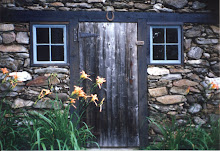Paolo Soleri
(1919~2013)
"Paolo Soleri was born on June 21, 1919, in Turin, Italy, the second of
three children of Emilio and Pia Soleri. His father was an accountant.
Paolo Soleri spent part of World War II in a unit that built and maintained Italian military facilities.
In 1947, after receiving a Ph.D. in architecture from the Polytechnic
University of Turin, Dr. Soleri traveled to Arizona to apprentice with Frank Lloyd Wright
Wright at Taliesin West for 18 months.
In 1949, he designed the Dome House in Cave Creek, Ariz., for a divorced
woman from Philadelphia. Made from cast concrete and natural stone, the
house featured a sunken living area and a glass dome overlooking the
desert. He ended up marrying the client’s daughter, Corolyn Woods (known
as Colly).
In 1950, while the newlyweds were traveling in Italy, Dr. Soleri was
hired to design a ceramics factory in the hillside town of Vietri sul
Mare; he came up with the idea of using fragments of pottery for walls.
Returning to Arizona in 1956, he designed a studio, gallery and foundry
for a Scottsdale site he called Cosanti. In the late 1960s, he purchased
860 acres of desert north of Phoenix, near Cordes Junction, and began
building Arcosanti.
Dr. Soleri’s few buildings outside Arizona include the Paolo Soleri
Amphitheater, an eccentric performance space in Santa Fe whose stage
design evokes Salvador Dalí. In recent years it has sat unused, and
preservation groups have been fighting to prevent its demolition.
Dr. Soleri hoped Arcosanti would show other cities how to minimize
energy use and encourage human interaction. “He was part of a flock of
utopian dreamers who designed mega-structure cities in the 1960s, but he
had more of a social and ecological agenda than the others,” said
Jeffrey Cook, a professor of architecture at Arizona State University,
in a 2001 interview. “When so many others were theorizing, Soleri went
out into the desert and actually built his vision with his own hands.
That’s the reason he became such a counterculture hero.”
Some critics detected a contradiction between Dr. Soleri’s communitarian
ideals and what they perceived as an authoritarian insistence on a
singular aesthetic. Mr. Goldberger saw “an arrogance” to Mr. Soleri’s
designs, “a certainty that he knows what is best for all of us.”
But Dr. Soleri’s work also showed a generation of younger architects an alternative to corporate modernism.
“Paolo’s mind was always going out into the cosmos,” said Will Bruder, a
Phoenix-based architect who apprenticed with Dr. Soleri in 1967. “I
learned how much you can do with very little, the potential of
simplicity and the ability to make unbelievable things from modest
means, to dream huge dreams.”
Dr. Soleri is survived by two daughters, Kristine Soleri Timm and
Daniela Soleri, and two grandchildren. His wife died in 1982 and, at his
request, was buried on a hillside at Arcosanti in view of his studio
window. His foundation said it would honor his wishes that he be buried
next to her."
the nytimes







































